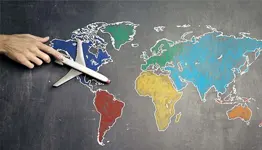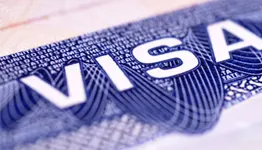We're moving! This site will be relocating to goingto.university in 2026. Please update your bookmarks to the new address.


With a population of 60 million residents, Italy is a major European hub for art, culture, politics and education across disciplines. Today, Italy is home to multiple-large scale industries and world-leading employers, from the fashion city of Milan in Northern Italy, to the major manufacturing facilities around Rome in Southern Italy.
Italy hosts nearly 6 million immigrants and many Asian and African communities are living in major Italian cities in large numbers. With every third Italian being able to speak English, tourists find it easy to travel and explore the stunning Italian scenery and endless museums all over the country.
The latest QS World University Rankings feature 41 Italian universities, and the country has been known for its world-class research and education for centuries. There are nearly 100,000 international students enrolled at top-ranked Italian universities today, most of whom are from the EU/EEA region.
International students from the European Union or EFTA (European Free Trade Association) countries can study at Italian universities without a student visa. But if your study program is for longer than three months, you must register at your local police station in Italy to get a residence permit.
For non-EU international students, Italy gives two types of student visas depending on the length of your degree programme:
You should contact your nearest Italian consulate or embassy, because they may require specific documents for international students from certain countries. We suggest that you prepare multiple copies and originals of the following documents, because they are required for all student visa applications to Italy:
We recommend that you begin the Italy student visa application process as soon as you receive an admission offer from an Italian university. Interview appointments usually take about six weeks, and average student visa processing times are between one and three weeks.
This means that the process will require at least two to three months of your time. And in the post-covid era, there might be delays in processing time. International students on a type D visa must report to their local Italian police station within 8 days of arrival in order to get a residence permit.
In most countries, student visa applications to Italy require a non-refundable visa application fee of 50 Euros. You may be required to pay an additional fee for biometrics and application processing at your local Italian visa processing centre. You will also need to pay a fee of 50 Euros at your local Italian police station in order to receive a valid residence permit, which must be renewed every year during your time in Italy.
International students from the EU and EFTA are allowed to work up to 20 hours every week alongside academics in Italy. Non-EU and non-EFTA international students must first receive a job offer from an Italian employer, which you can then use to get a work permit from the Italian government. This application process requires about two months of processing time, and you should plan your job applications accordingly.
Many international students secure internships and part-time employment at world-leading firms all over Italy in order to gain valuable work experience and offset tuition & living expenses.
Top-ranked Italian universities such as the University of Milan and Bocconi University offer you the chance to gain world-class academic knowledge while having access to high-quality research and innovation facilities across nearly all major disciplines. Additionally, international students get to live in one of the world’s cultural capitals and a tourist-friendly region which can be easily explored on your weekends and academic breaks.
International students can comfortably travel to Italy from their home countries via major European airports including Rome, Amsterdam and Paris. Italy’s excellent road and train network also allows for easy travel within the country. And the best part for international students is that Italian public universities offer highly affordable tuition fees of between 1,000 to 4,000 US Dollars per year, a fraction of what you would have to pay at similarly ranked universities in the USA and the United Kingdom.
Living expenses in major Italian cities are also just over half of what you would be paying as an international student in major western European cities such as Paris and London. We recommend that you conduct further research to update yourself on the latest Italian student visa application requirements as the Italian government can make changes to this process.
For further information about student visas, see our International Student Visas article.
See all universities in Italy.
Study in ItalyJoin the StudyLink email list and never miss a chance to turn your study abroad dreams into reality!

Read our key advice article to help you make the best decision for your education and start your International study adventure.

In this article we look at how to approach choosing where in the world you would like to study.

Read StudyLink's suggestions on your first steps when deciding where to study abroad, with helpful tips to make your decision easier.

Find out more about English language tests, your options and what is required as an overseas student.

StudyLink.com take a detailed look into the costs of studying abroad and all the aspects that you should budget for when embarking on your studies.

We answer 10 common questions about applying for a student visa to help make your visa application quick and easy.

Find out more about international student visas for studying abroad, as well as how, where and when to apply for yours.

Find out more about funding and scholarships for international students, and what financial assistance might be available to you.

How to choose a course that fits you? Check our top tips on choosing which course is best for you to help you make an informed decision.
The latest articles from study abroad providers and StudyLink.com to hep you on your study abroad journey.
See more articles